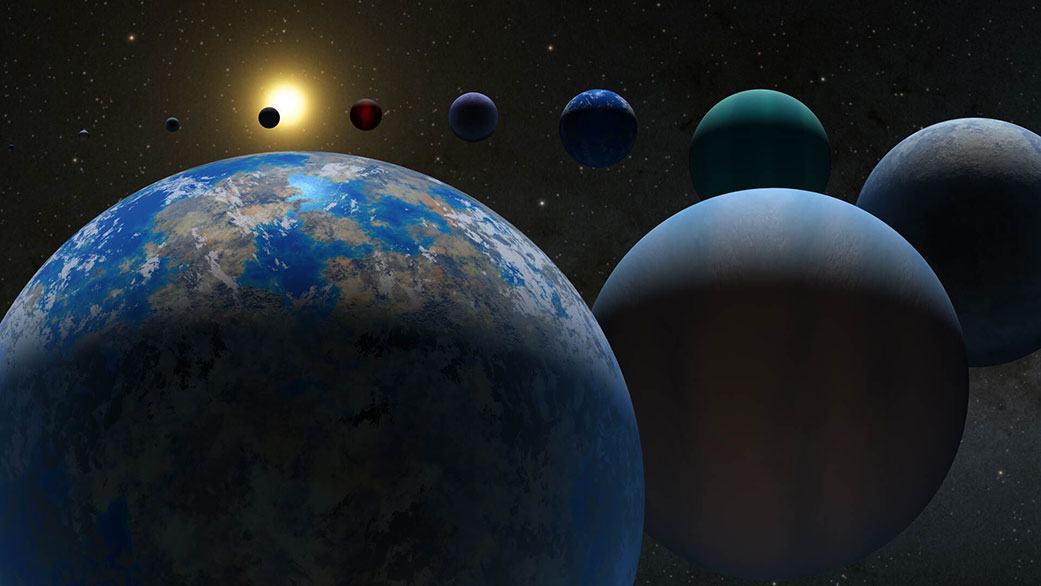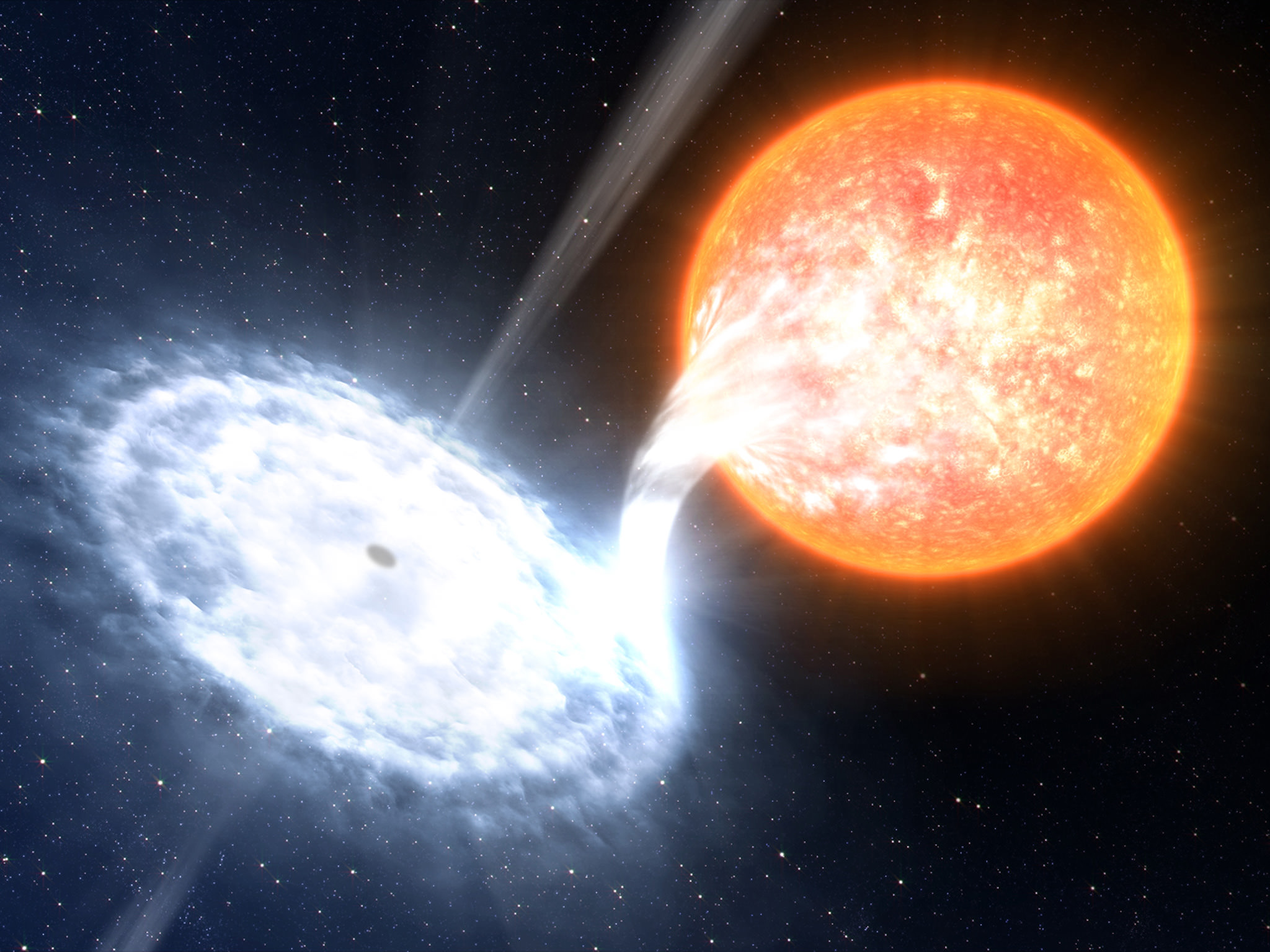Earth formed 4.54 billion years ago. The first period of the history of the Earth was known as the Hadean Period which lasted from 4.54 billion to 4 billion years ago. During that time, Earth was thought to be a magma filled, volcanic hellscape. It all sounds rather inhospitable at this stage but even then, liquid oceans of water are thought to have existed under an atmosphere of carbon dioxide and nitrogen. Recent research has shown that this environment may well have been rather more habitable than once thought.
Continue reading “The Early Earth Wasn’t Completely Terrible”Scientists Reveal a New Way to Study Near-Earth Asteroids
On November 18th, 2022, shortly before midnight, the Catalina Sky Survey (CSS) in Arizona and other observatories worldwide detected a small object (now designated 2022 WJ1) heading toward Earth. For the next three hours, the CSS and the Southern Ontario Meteor Network (SOMN) at the University of Western Ontario monitored the object before it entered Earth’s atmosphere above Southern Ontario. At 03:26 a.m. EST (12:26 a.m. PST) on November 19th, the object appeared as a bright fireball that scattered meteorite fragments across the Niagara region.
This event triggered an international collaboration to hunt down the fragments for analysis, but none have been found yet. In a recent study led by Western University and Lowell Observatory, an international team of scientists described a new approach for studying near-Earth asteroids (NEA) based largely on 2022 WJ1. The study is significant in that the team determined the NEA’s composition—the smallest asteroid characterized to date—and established a new and integrated methodology for studying other NEAs that may impact Earth someday.
Continue reading “Scientists Reveal a New Way to Study Near-Earth Asteroids”New Study Examines How Extraterrestrial Civilizations Could Become “Stellarvores.”
One of the most challenging aspects of astrobiology and the Search for Extraterrestrial Intelligence (SETI) is anticipating what life and extraterrestrial civilizations will look like. Invariably, we have only one example of a planet that supports life (Earth) and one example of a technologically advanced civilization (humanity) upon which to base our theories. As for more advanced civilizations, which statistically seems more likely, scientists are limited to projections of our own development. However, these same projections offer constraints on what SETI researchers should search for and provide hints about our future development.
In a series of papers led by the Blue Marble Space Institute of Science (BMSIS), a team of researchers examines what Earth’s level of technological development (aka. “technosphere”) will look like in the future. In the most recent installment, they offer a reinterpretation of the Kardashev Scale, which suggests that civilizations expand to harness greater levels of energy (planet, host star, and galaxy). Instead, they suggest that the Kardashev Scale establishes upper limits on the amount of stellar energy a civilization can harness (a “luminosity limit”) and that civilizations might circumvent this by harnessing stellar mass directly.
Continue reading “New Study Examines How Extraterrestrial Civilizations Could Become “Stellarvores.””Project Hyperion is Seeking Ideas for Building Humanity’s First Generation Ship

The dream of traversing the depths of space and planting the seed of human civilization on another planet has existed for generations. For long as we’ve known that most stars in the Universe are likely to have their own system of planets, there have been those who advocated that we explore them (and even settle on them). With the dawn of the Space Age, this idea was no longer just the stuff of science fiction and became a matter of scientific study. Unfortunately, the challenges of venturing beyond Earth and reaching another star system are myriad.
When it comes down to it, there are only two ways to send crewed missions to exoplanets. The first is to develop advanced propulsion systems that can achieve relativistic speeds (a fraction of the speed of light). The second involves building spacecraft that can sustain crews for generations – aka. a Generation Ship (or Worldship). On November 1st, 2024, Project Hyperion launched a design competition for crewed interstellar travel via generation ships that would rely on current and near-future technologies. The competition is open to the public and will award a total of $10,000 (USD) for innovative concepts.
Continue reading “Project Hyperion is Seeking Ideas for Building Humanity’s First Generation Ship”Plastic Waste on our Beaches Now Visible from Space, Says New Study

According to the United Nations, the world produces about 430 million metric tons (267 U.S. tons) of plastic annually, two-thirds of which are only used for a short time and quickly become garbage. What’s more, plastics are the most harmful and persistent fraction of marine litter, accounting for at least 85% of total marine waste. This problem is easily recognizable due to the Great Pacific Garbage Patch and the amount of plastic waste that washes up on beaches and shores every year. Unless measures are taken to address this problem, the annual flow of plastic into the ocean could triple by 2040.
One way to address this problem is to improve the global tracking of plastic waste using Earth observation satellites. In a recent study, a team of Australian researchers developed a new method for spotting plastic rubbish on our beaches, which they successfully field-tested on a remote stretch of coastline. This satellite imagery tool distinguishes between sand, water, and plastics based on how they reflect light differently. It can detect plastics on shorelines from an altitude of more than 600 km (~375 mi) – higher than the International Space Station‘s (ISS) orbit.
Continue reading “Plastic Waste on our Beaches Now Visible from Space, Says New Study”Astronauts Could Take an Asteroid Ferry from Earth to Mars
This idea really is quite a fascinating one. Currently a trip to Mars would require large amounts of air, water and other resources to sustain human life but would also expose travellers to harmful levels of radiation. A wonderful solution has been proposed in a new paper recently published by researchers from Ukraine. They propose that asteroids which already travel relatively close by Earth, Mars and even Venus already could be used to hop between the planets. They are already making the journey anyway and so perhaps the cosmos already provides the solution to interplanetary travel.
Continue reading “Astronauts Could Take an Asteroid Ferry from Earth to Mars”Establishing a New Habitability Metric for Future Astrobiology Surveys

The search for exoplanets has grown immensely in recent decades thanks to next-generation observatories and instruments. The current census is 5,766 confirmed exoplanets in 4,310 systems, with thousands more awaiting confirmation. With so many planets available for study, exoplanet studies and astrobiology are transitioning from the discovery process to characterization. Essentially, this means that astronomers are reaching the point where they can directly image exoplanets and determine the chemical composition of their atmospheres.
As always, the ultimate goal is to find terrestrial (rocky) exoplanets that are “habitable,” meaning they could support life. However, our notions of habitability have been primarily focused on comparisons to modern-day Earth (i.e., “Earth-like“), which has come to be challenged in recent years. In a recent study, a team of astrobiologists considered how Earth has changed over time, giving rise to different biosignatures. Their findings could inform future exoplanet searches using next-generation telescopes like the Habitable Worlds Observatory (HWO), destined for space by the 2040s.
Continue reading “Establishing a New Habitability Metric for Future Astrobiology Surveys”China Releases its First Roadmap for Space Science and Exploration Through 2050.
China’s space program has advanced considerably since the turn of the century. In addition to developing heavy-launch vehicles like the Long March 5 and building a modular space station in orbit, China has also embarked on an ambitious program of lunar exploration (Chang’e) – which has launched six robotic missions to explore the Moon’s surface since 2007. These missions are paving the way for crewed missions to the Moon by 2030 and creating a permanent habitat around the Moon’s southern polar region – the International Lunar Research Station (ILRS).
They also plan to send crewed missions to Mars by 2033, which will culminate in the creation of a permanent base there too. Earlier today, the Chinese Academy of Sciences (CAS), the China National Space Administration (CNSA), and the China Manned Space Agency (CMSE) jointly released the country’s first long-term scheme for space science and exploration. Titled “National Medium—and Long-Term Development Plan for Space Science (2024-2050),” this plan elaborated on the basic principles, development goals, and roadmap for the country’s space science and exploration through 2050.
Continue reading “China Releases its First Roadmap for Space Science and Exploration Through 2050.”The Polaris Dawn Crew is Back on Earth

On September 15th, 2024, the Polaris Dawn crew returned to Earth after spending five days in orbit. The mission was the first of three planned for the Polaris program, a private space project to advance human spaceflight capabilities and raise funds and awareness for charitable causes. The mission’s Dragon spacecraft safely splashed down off the coast of Florida at 3:36:54 a.m. EDT (12:36:54 p.m. PDT). Once their spacecraft was retrieved, the crew was flown to the Kennedy Space Center to see their families and undergo medical examinations before traveling to Houston to complete more of the mission’s studies.
Continue reading “The Polaris Dawn Crew is Back on Earth”A Review of Humanity’s Planned Expansion Between the Earth and the Moon

Between Low Earth Orbit (LEO) and the Moon, there is a region of space measuring 384,400 km (238,855 mi) wide known as Cislunar space. In the coming decades, multiple space agencies will send missions to this region to support the development of infrastructure that will lead to a permanent human presence on the Moon. This includes orbital and surface habitats, landing pads, surface vehicles, technologies for in-situ resource utilization (ISRU), and other elements that will enable the long-term exploration and development of the lunar surface.
For all parties concerned, Cislunar space holds immense potential in terms of scientific, commercial, and military applications. The vastly increased level of activity on and around the Moon makes space domain awareness (SDA) – knowledge of all operations within a region of space – paramount. It is also necessary to ensure the continued success and utilization of the covered region. In a recent paper, a team of aerospace engineers considered the missions planned for the coming decades and evaluated the state and shortcomings of their space domain awareness.
Continue reading “A Review of Humanity’s Planned Expansion Between the Earth and the Moon”




